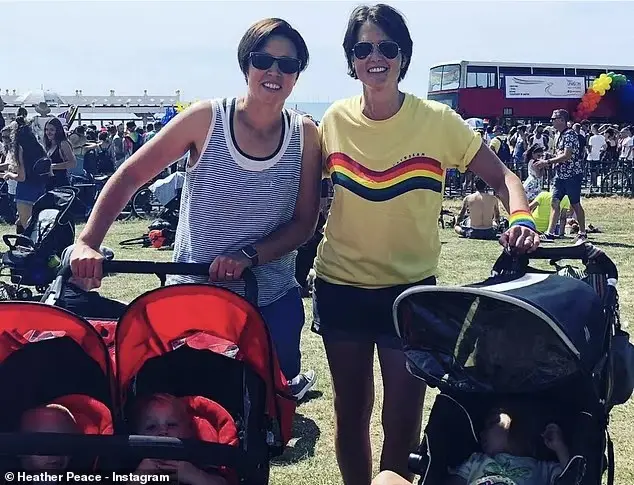What began as a private health concern soon evolved into an unimaginable dual challenge—one that would redefine a family’s life, priorities, and resilience. In a situation that doctors describe as rare and emotionally complex, a married couple has found themselves facing breast cancer diagnoses at nearly the same time, launching them both into individual but intertwined medical journeys.
At the center of this unfolding story are two women deeply committed to each other and their three young children. Their lives, once structured around busy careers and family routines, were abruptly redirected into months of consultations, treatments, surgeries, and recovery periods. What sets their story apart is not only the shared diagnosis, but also the contrast in severity, timing, and treatment pathways—compounding an already overwhelming experience.
The first diagnosis came in late 2023, when one of the women, who had been juggling a demanding professional schedule, noticed a physical change but delayed seeking medical attention. It was only after repeated encouragement from her spouse that she scheduled an appointment. Within just hours of that visit, she was informed that she had breast cancer. What followed was a battery of tests and a confirmed diagnosis of a sizable and aggressive tumor, ultimately requiring a full mastectomy, months of chemotherapy, and additional radiotherapy.
Before the family could fully process this upheaval, the second diagnosis arrived—this time for her partner. Earlier this year, medical tests revealed that she, too, had breast cancer, though of a smaller and less invasive kind. Her treatment path involved a lumpectomy and radiotherapy, significantly less intensive than her wife’s, yet no less emotionally significant. The irony of the situation—two diagnoses, two vastly different treatments, and one shared household full of young children—was not lost on them. They approached it with both courage and occasional humor, often joking about their respective treatment plans even as they navigated pain, exhaustion, and uncertainty.
The timing of the diagnoses allowed for no emotional buffer. “There was no space between the news,” one of them admitted in an interview. “It just kept coming.” Their three children, all under the age of 11, remained the focal point of their lives throughout—motivating them to remain strong, present, and as emotionally grounded as possible, despite everything they were enduring behind closed doors.
The couple also credited their support networks, both medical and personal, for helping them through the most intense phases of treatment. Family and friends rallied around them, providing logistical support with the children and emotional support for the couple’s day-to-day wellbeing. Their appreciation extended deeply to the National Health Service, which they described as “efficient, compassionate, and dignified” in handling their cases.
Professionally, one of the women continued working throughout most of her treatment—a feat made possible by the flexibility and understanding of her colleagues, who adapted shooting schedules and appearances to accommodate her medical needs. Publicly, she chose to be transparent about her journey, hoping to use her platform to encourage early detection and reduce stigma surrounding cancer diagnoses and treatment.
“I feel very lucky,” she recently stated, following the conclusion of her chemotherapy. She shared videos and photos documenting her treatment process, including the emotional moment of being fitted for a wig—an intimate and vulnerable part of the cancer journey. Her intention was not only to share her story but to normalize conversations around breast cancer and encourage others to prioritize their health without hesitation.
The couple’s story also underscores the significance of early detection. In both cases, initial hesitation could have delayed critical interventions. The first diagnosis was triggered only after one spouse insisted the other go to the doctor. In retrospect, that insistence may have saved her life. Medical professionals emphasize that such advocacy within families can lead to earlier diagnoses, more treatment options, and better outcomes.
Their experience reflects broader realities faced by many: balancing health, career, and parenting under unimaginable stress, while clinging to moments of joy, normalcy, and togetherness. As they continue to recover and adjust to a new normal, they’ve become vocal about the importance of gratitude. “Life feels very different now,” one of them said. “But it’s wonderful. You hold on tighter. You cherish more.”
Their parallel journeys are not only a testament to medical science and support systems but to the enduring strength of partnership, family, and the human spirit when tested by extraordinary circumstances.

Emily Johnson is a critically acclaimed essayist and novelist known for her thought-provoking works centered on feminism, women’s rights, and modern relationships. Born and raised in Portland, Oregon, Emily grew up with a deep love of books, often spending her afternoons at her local library. She went on to study literature and gender studies at UCLA, where she became deeply involved in activism and began publishing essays in campus journals. Her debut essay collection, Voices Unbound, struck a chord with readers nationwide for its fearless exploration of gender dynamics, identity, and the challenges faced by women in contemporary society. Emily later transitioned into fiction, writing novels that balance compelling storytelling with social commentary. Her protagonists are often strong, multidimensional women navigating love, ambition, and the struggles of everyday life, making her a favorite among readers who crave authentic, relatable narratives. Critics praise her ability to merge personal intimacy with universal themes. Off the page, Emily is an advocate for women in publishing, leading workshops that encourage young female writers to embrace their voices. She lives in Seattle with her partner and two rescue cats, where she continues to write, teach, and inspire a new generation of storytellers.









